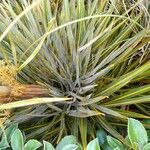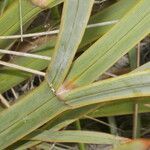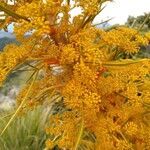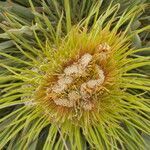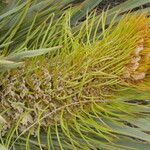A perennial plant. It grows 90 cm-2.4 m high. It spreads 1.2-1.8 m wide. The leaves are 50 cm long and usually divided into leaflets along the stalk. These segments are 20 cm long and 12 mm wide. Male and female flowers usually occur on separate plants. The flower stems are narrow and 2.4 m tall with cream flowers.
